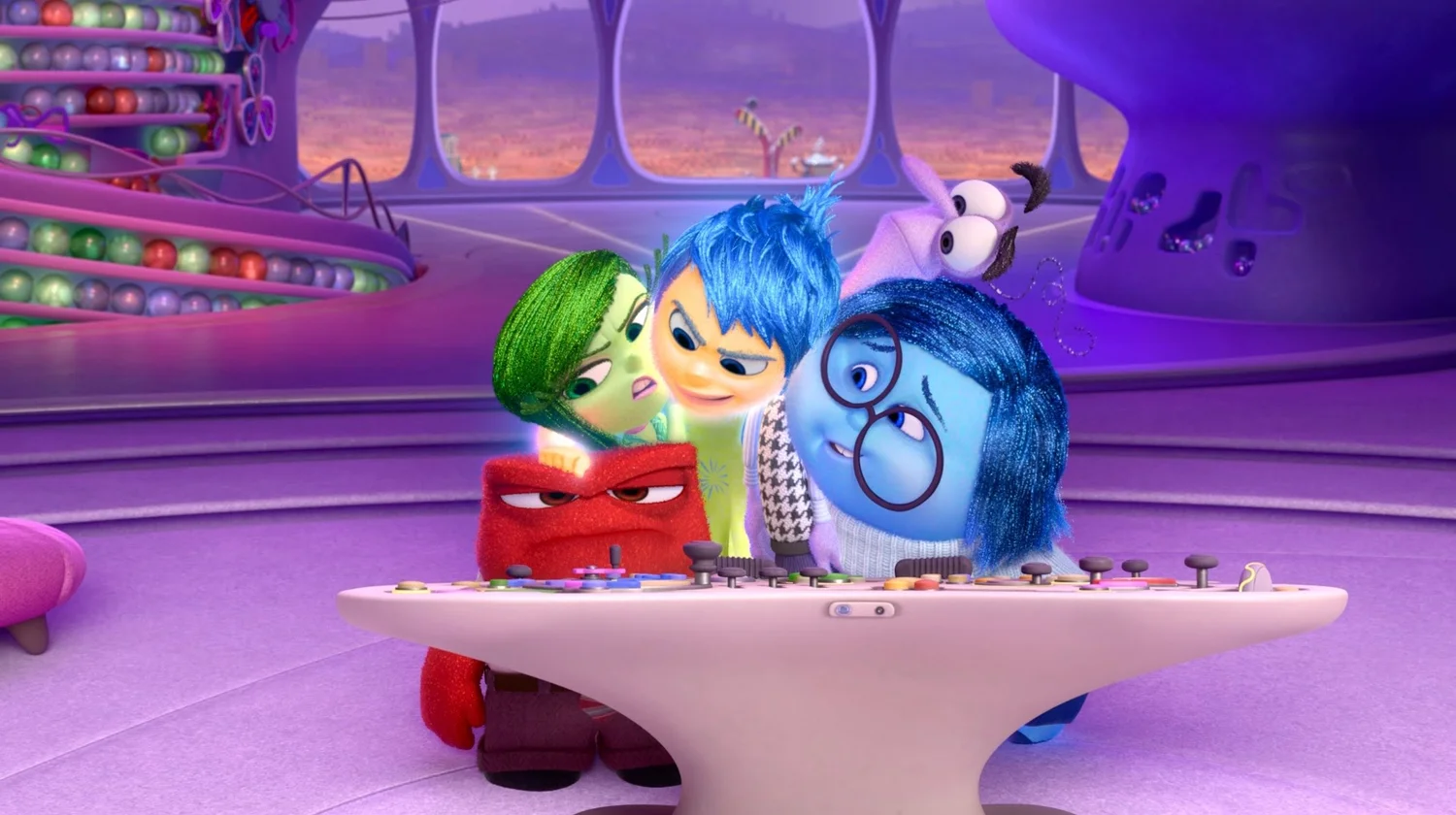Image courtesy of Disney/Pixar
Pixar’s Inside Out 2 is more than just a sequel to a beloved animated film, it is a poignant exploration of what it means to grow up. Following Riley, now a 13-year-old navigating the emotional turbulence of adolescence, the film masterfully blends humour, heart, and psychology to reflect the real-life journey of emotional growth.
While the original movie introduced audiences to the concept of personified emotions Joy, Sadness, Anger, Fear, and Disgust, the sequel expands this inner world with new feelings like Anxiety, Embarrassment, Envy, and Ennui.
Growing Up Means Welcoming New Emotions
One of the most striking aspects of Inside Out 2 is the arrival of new characters representing Riley’s evolving emotions. Anxiety steps in as a hyper-vigilant planner, Envy emerges with a yearning to fit in, Embarrassment struggles with self-consciousness, and Ennui embodies the sarcastic boredom of teenage life.
These additions aren’t merely for comedic effect or fun like you get with the most expensive player in IPL auction; they represent the psychological reality that adolescence introduces a wider spectrum of feelings, often conflicting and confusing. In childhood, emotions like Joy and Sadness dominate as kids experience life in simpler terms. But as we grow, our inner landscape becomes richer and more complicated. Anxiety, for example, can be both a motivator and a source of stress.
The Importance of Emotional Balance
At its heart, Inside Out 2 is a story about balance. In the first film, Joy learned that Sadness was essential to Riley’s emotional health. The sequel builds on this theme by showing that emotional resilience doesn’t come from suppressing difficult feelings but from integrating them. Anxiety, for instance, is not “bad” in itself it becomes problematic only when it dominates Riley’s mind and sidelines the other emotions. This dynamic mirrors real life.
Emotional resilience is not about always being happy or fearless; it’s about flexibility. Research in psychology shows that people who can experience and accept a wide range of emotions are better equipped to handle stress and adapt to change. When we allow all emotions to coexist whether it’s fear alerting us to danger, envy revealing unmet desires, or embarrassment encouraging humility, we develop the inner strength to navigate life’s ups and downs.
Growing Pains and the Path to Identity
Adolescence is often described as a search for identity, and Inside Out 2 captures this beautifully. Riley’s journey is not just about dealing with new feelings but also about defining who she is. The concept of a “Sense of Self,” depicted as a glowing core of memories, represents the delicate construction of personal identity. As Riley encounters new social situations, making the hockey team, meeting new friends, and fearing rejection, her inner world reorganises to reflect the person she is becoming.
This resonates with anyone who has faced the uncertainties of growing up. Our teenage years are full of firsts: first failures, first friendships that change, first moments of realising that we cannot please everyone. These experiences, though painful at times, are crucial for building resilience. The film reminds us that identity is not a fixed destination but a living process, constantly shaped by our choices and emotions.
Lessons in Emotional Resilience for All Ages
While Inside Out 2 is set in the world of a teenager, its lessons on emotional resilience extend far beyond adolescence. Adults watching the film may find themselves reflecting on their own relationship with emotions. How often do we, like Anxiety, try to control every outcome? How frequently do we, like Ennui, retreat into indifference to avoid discomfort? The movie invites viewers of all ages to reconsider their emotional habits. Resilience, as the film suggests, comes from acceptance and self-compassion. It’s about recognising that emotions are signals, not threats.
Joy may represent happiness, but Sadness can foster empathy, Fear can inspire caution, and Anxiety can motivate preparation. When we stop labelling emotions as “good” or “bad,” we free ourselves to experience life more fully. Moreover, the film highlights the power of community in emotional resilience. Riley’s growth is supported by her friends, family, and inner emotions working together. Similarly, in real life, resilience often depends on strong relationships and open communication.
Conclusion
Inside Out 2 is more than an animated sequel, it is a guide to understanding the human heart. By portraying the messy, often contradictory nature of emotions, it validates the struggles of growing up and encourages viewers to embrace every part of their inner world. Emotional resilience, as the film beautifully illustrates, is not about silencing fear, anxiety, or sadness.
It is about welcoming them as companions on the journey of self-discovery. As Riley learns to integrate her new emotions, we, too, are invited to reflect on our own. Growing up may be inevitable, but Inside Out 2 shows that with acceptance, balance, and compassion, it can also be profoundly empowering.



